Has this ever happened to you? You’re in the kitchen cooking dinner, and you reach for a pan on the top shelf of your cabinet, and your hand grazes a long scratch across the wood. It is unsightly, but it’s also a pain to clean. If this has happened to you, don’t worry; there is a fix!
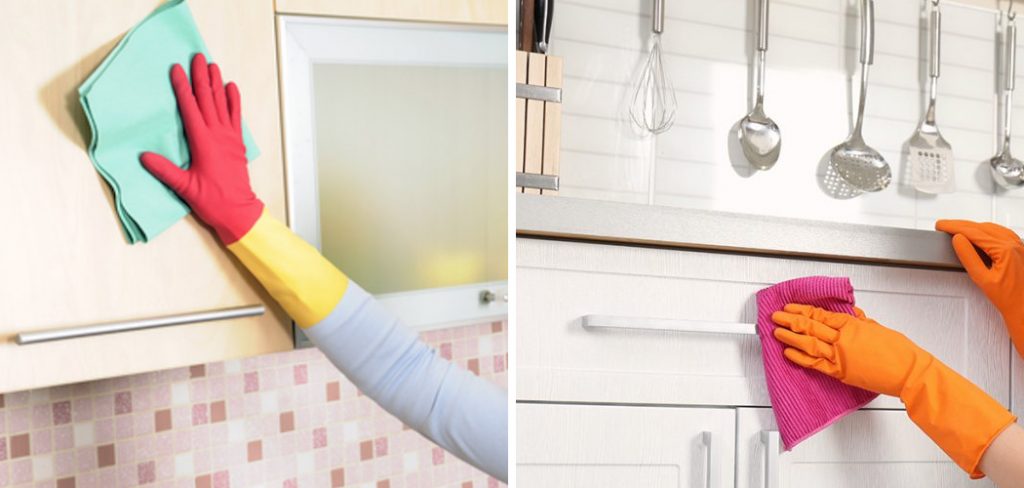
Kitchen cabinets are often a focal point in a home, and homeowners take pride in their appearance. Unfortunately, scratches and dings can occur over time, which can take away from the overall look of the cabinets. However, there are ways to fix these scratches and restore your kitchen cabinets to their original condition. In this blog post, we will discuss some of the methods you can use how to fix scratches on kitchen cabinets.
Summary: This blog post will show you how to fix unsightly scratches on kitchen cabinets. We will provide step-by-step instructions for using wood filler, stain marker, nail polish, touch-up paint, sharpie, wax, white vinegar, boiled linseed oil and furniture wax to repair the wood finish. We will also explain how to make a baking soda and water paste for minor scratches.
10 Ways on How to Fix Scratches on Kitchen Cabinets
1. Use a Wood Filler
If your cabinets have a small scratch, you can try using a wood filler. Make sure to get a filler that is the same color as your cabinets. Apply the filler with a putty knife, and then let it dry. Once it is dry, sand it down until it is level with the rest of the cabinet.
2. Use a Stain Marker
There are stain markers available in various colors, so you can find one that closely matches the color of your cabinets. They are also designed to cover up scratches and blemishes, making them a perfect choice for fixing minor kitchen cabinet scratches. To use, simply apply the marker to the scratch and wipe away any excess.
3. Use Nail Polish
If you have a small scratch, you can try using nail polish to cover it up. You may need to apply multiple coats to get the desired coverage. Once the nail polish is dry, you can buff it out with a soft cloth to make it less noticeable.
4. Use Touch-Up Paint
If you have a scratch that is deeper, you may need to get touch-up paint to cover it. You can find touch-up paint at most hardware stores. Choose a color that is similar to your cabinets and apply it to the scratch. Once the paint is dry, you can use a soft cloth to buff it out so it is not as noticeable.
5. Use a Sharpie
If you have a black or dark-colored cabinet, you can use a black Sharpie to cover up scratches. Simply color over the scratch with the marker and let it dry. Once it’s dry, you can buff it out with a soft cloth to make it less noticeable. If you have a white or light-colored cabinet, you can use a white Sharpie to cover up scratches. Simply color over the scratch with the marker and let it dry. Once it’s dry, you can buff it out with a soft cloth to make it less noticeable.
6. Use wax
If the scratch is not too deep, you can try using wax to cover it up. First, apply a small amount of wax to the scratch and then buff it out with a soft cloth. The wax will fill in the scratch and make it less noticeable.
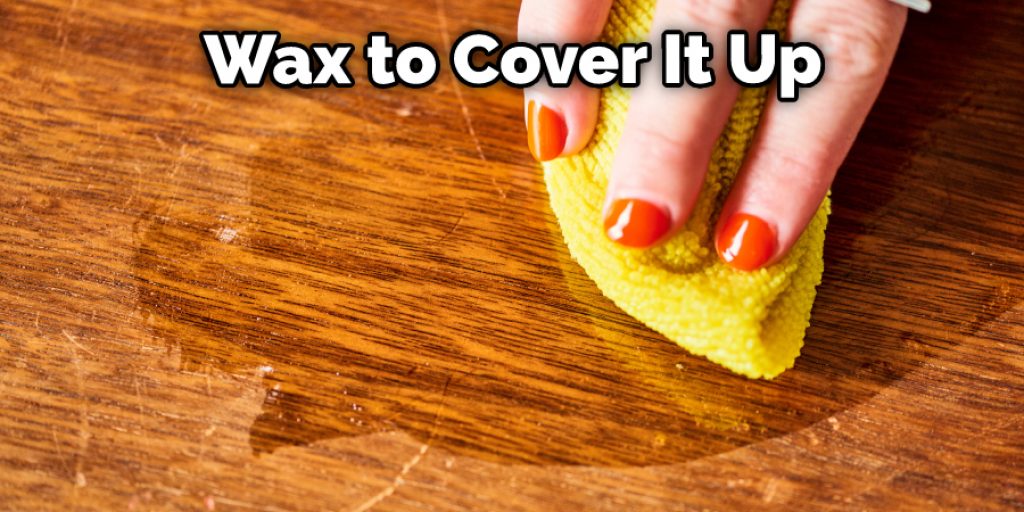
7. Use White Vinegar
You can also use white vinegar to fix scratches on your kitchen cabinets. Pour some vinegar onto a clean cloth and rub it onto the affected area. The vinegar’s acidity will help remove the scratch and restore your cabinet’s finish. Be sure to rinse the area with water and dry it off afterward.
8. Use Boiled Linseed Oil
Another option is to use boiled linseed oil. This will help to seal the wood and protect it from future scratches. Apply a thin coat of oil to the scratched area, using a soft cloth. Allow the oil to soak in for several minutes before wiping off any excess. You can apply another thin coat if desired. Allow the area to dry completely before using the cabinets.
9. Use Furniture Wax
You can also use furniture wax to fix scratches on your kitchen cabinets. First, rub the scratch with a cotton ball soaked in distilled white vinegar. Then, apply a small amount of furniture wax to the scratch and rub it in with a soft, clean cloth. Finally, buff the area with a dry, clean cloth to remove any excess wax.
10. Use Baking Soda and Water Paste
Last but not least, you can try using baking soda and water paste to fix scratches on your kitchen cabinets. Simply mix together equal parts baking soda and water to form a paste. Apply the paste to the scratch and let it sit for several minutes. Then, use a clean cloth to buff the area until the scratch is gone. Next, rinse the area with water and dry it off afterward.
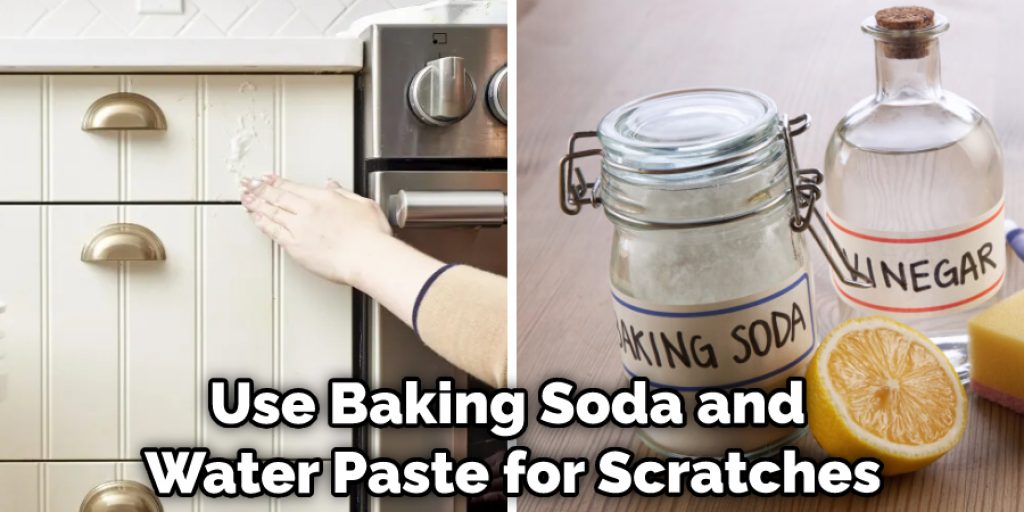
No matter what method you choose, take your time and go slowly. You don’t want to make the scratch worse by applying too much pressure or using the wrong method. If you’re unsure which method to use, consult a professional cabinet finisher for assistance.
Tips to Prevent Scratches on Kitchen Cabinets
- Keep your kitchen cabinets clean. This will help to prevent dirt and dust from building up and causing scratches.
- Use a cabinet liner. A cabinet liner can help to protect your cabinets from scratches and other damage.
- Be careful when you are cooking. Avoid using harsh chemicals or abrasive materials near your cabinets, as these can cause scratches.
- Use coasters. Placing coasters on your countertops can help to prevent scratches from glasses and other items.
- Protect your cabinets with a sealant. A sealant can help to create a barrier between your cabinets and potential sources of damage.
- Clean your cabinets regularly. Wiping down your cabinets regularly will help to keep them looking their best.
- Be careful when you are moving furniture. Avoid bumping into your cabinets, as this can cause scratches.
Things to Consider When Fixing Scratches on Kitchen Cabinets
1. The Severity of the Scratch
If the scratch is very small, you may be able to fix it with a touch-up pen. However, if the scratch is more significant, you will need to use a putty knife and sandpaper to smooth it out.
2. The Finish of the Cabinet
If the cabinets are painted, you will need to match the paint color and finish exactly. For stained cabinets, you will need to find a putty that closely resembles the color of the wood.
3. The Location of the Scratch
If the scratch is on a visible cabinet area, it will need to be fixed. However, if the scratch is on an area that is not easily seen, such as the back of a cabinet, it may not need to be fixed.
4. The Size of the Scratch
If the scratch is smaller than a quarter, it can likely be fixed with a wood filler. If the scratch is larger, you will need to use a putty knife and wood filler to fill in the scratch and then sand it down until it is level with the rest of the cabinet.
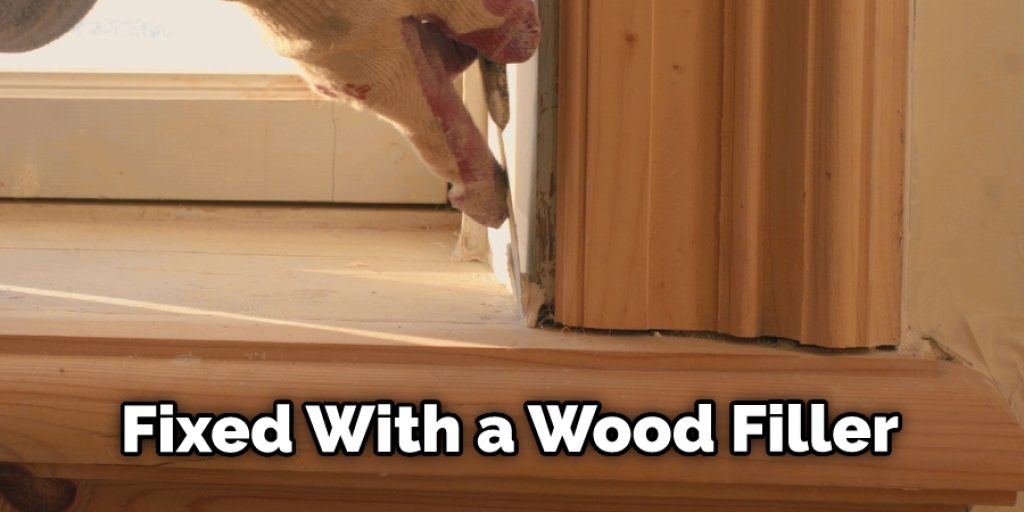
5. The Depth of the Scratch
If the scratch is shallow, you can likely fix it with a wood filler. If the scratch is deep, you’ll need to sand down the area until it’s flush with the surrounding wood, then use a wood filler.
6. The Type of Wood
Different woods will require different methods for fixing scratches. For example, cherry wood is very soft, while maple is very hard. If you are not sure what type of wood your cabinets are, take a small piece of wood and try to scratch it with a key. The harder the wood, the more difficult it will be to scratch.
You Can Check It Out To Fix Peeling Thermofoil Cabinets
How Do You Touch Up Scratches on Kitchen Cabinets?
There are a few ways to touch up scratches on your kitchen cabinets. One way is to use a product like Cabinet Rescue. This is a two-part kit that includes both the paint and the varnish. Then, you mix these together to create a durable finish that will cover up scratches and minor damage.
Another option is to use a wood filler. This is a putty-like substance that you can apply to the scratch and then sand down until it is level with the rest of the cabinet surface. You can also try using a Sharpie or other permanent marker to cover up the scratch. Make sure that you use a color that closely matches the cabinet finish.
Whichever method you choose, follow the manufacturer’s instructions and take your time to get a smooth, even finish. Touching up scratches on kitchen cabinets is a simple project that anyone can do. You can make your cabinets look new again with a little time and effort.
Frequently Asked Questions
Do You Repair Deep Scratches in Wood Cabinets?
If you have deep scratches or dents in your wood cabinets, you may need to have them repaired. This is because most types of paint and varnish cannot be applied to these areas, which means that the damage will continue to worsen over time.
Whether the cabinet is made from particleboard, MDF, or hardwood, it is important to get it repaired as soon as possible because even small dents can lead to large holes that allow moisture and dust particles inside.
If you’re unable or unwilling to repair your cabinet yourself, then consider consulting with a professional restoration company.
These professionals are experienced in repairing all kinds of damages caused by water (such as floods), smoke (from fires), pets/children/animals ( likes scratching furniture ), and more. They will use special techniques and products designed specifically for this type of work so that your cabinet remains looks brand new long after the repairs are completed.
Can Laminate Cabinets Be Repaired?
Yes, Laminate Cabinets can be repaired. However, it is important to note that the repair may not hold up over time and the original finish might eventually wear away. Therefore, it’s advised to get a professional assessment beforehand if you are considering restoring your laminate cabinets.
Is It Worth It to Reface Kitchen Cabinets?
There’s no one-size-fits-all answer to this question, as the costs and benefits of refacing kitchen cabinets will vary depending on the cabinets’ condition and the specific needs of your kitchen. That being said, here are some tips that may help you decide if it’s worth it to reface your cabinets:
- Estimate the cost – Before you start any project, it’s important to have an estimate in mind. This will help you better understand the total cost of your project and determine if it’s something that is realistically feasible.
- Inspect the condition of your cabinets – If your cabinets are in poor condition, they may not withstand the refacing process. If this is the case, it may be best to just replace them instead of trying to reface them.
- Consider your needs – Not all kitchens need cabinet refacing – some people prefer a more modern look that doesn’t include any cabinet face panels. If you’re unsure if face panels are necessary for your kitchen, consult with a professional before starting any project.
- Think about future maintenance – Once you’ve refaced your cabinets, be sure to plan for future maintenance needs such as painting and refinishing. This will ensure that your cabinet faces remain in good condition and look great for years to come.
Hopefully, these tips will help you make an informed decision about whether or not to face your kitchen cabinets. If you have any additional questions, please don’t hesitate to contact us!
Does Vinegar Remove Deep Scratches From Wood?
Yes, vinegar can remove deep scratches from wood. Vinegar is a naturally occurring acid that helps to break down organic material and polish the surface of the wood. This process seals the cracks in the wood so they don’t hold water and cause rot. To use vinegar on wooden surfaces, pour it directly onto the scratch or pest problem and wait several minutes for it to work its magic.
Conclusion
Kitchen cabinets are a key part of any kitchen. Not only do they provide storage, but they also can add to the room’s overall design. Unfortunately, many people face one issue with their kitchen cabinets is scratches. These scratches can be caused by various things, such as knives or pots and pans being slid across the cabinet surfaces.
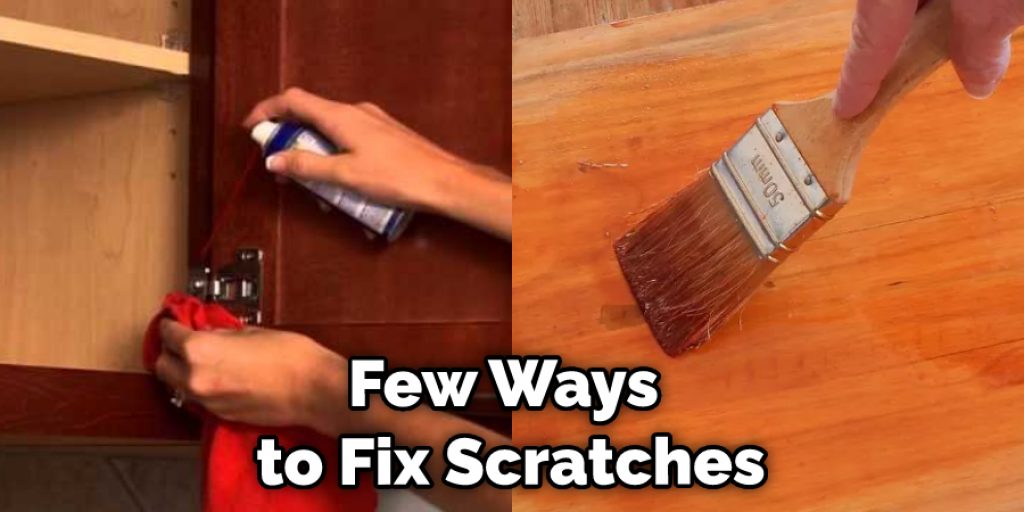
While it may seem like there is not much you can do to fix these scratches, there are a few methods that you can try. In this blog post, we have discussed a few ways on how to fix scratches on kitchen cabinets. If you have any questions about this topic then feel free to comment below!
